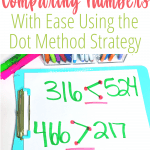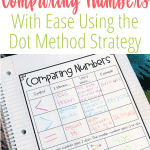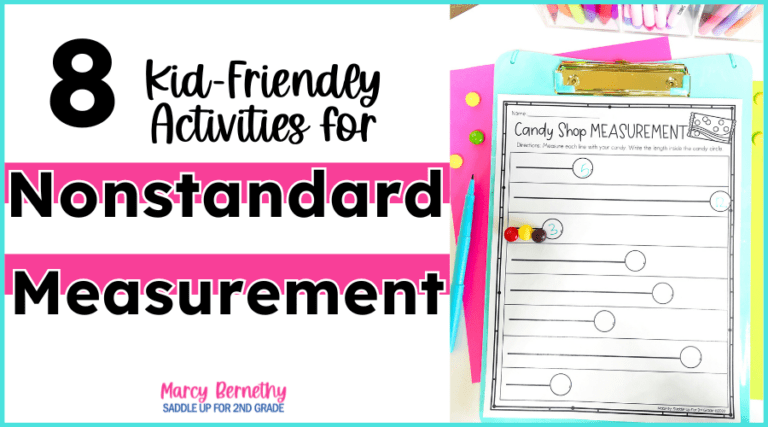

Join me for a FREE, Guided Math workshop to discover how to easily incorporate Guided Math into your current schedule!
The skill of comparing numbers requires a deep understanding of place value. Students develop this understanding over time as they are exposed to multiple representations of numbers in the primary grades. Students often find it tricky to know which way the symbol should go. This can cause a lot of confusion and frustration for students. In this blog post, I’m sharing a very simple strategy for how to teach comparing numbers called the Dot Method. Read on to learn the strategy and see it in action with a few comparing numbers hands-on activities.
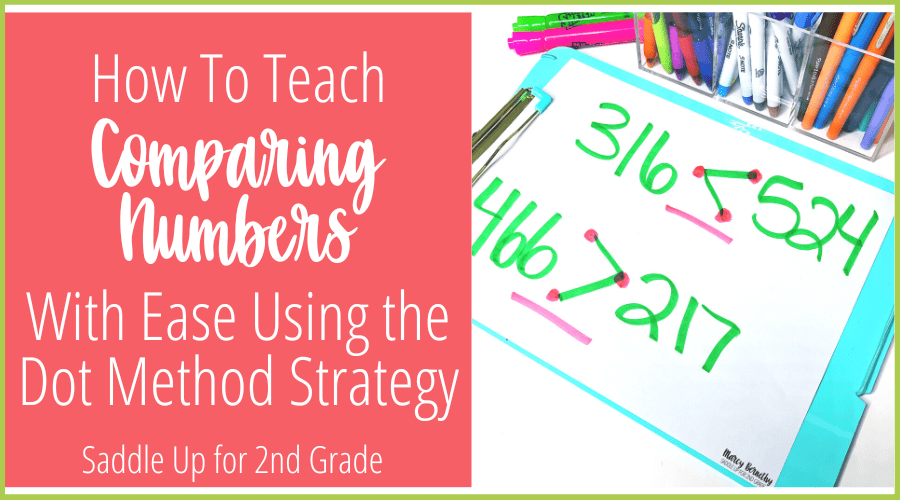
A few years ago, I was working in a school district that wanted us to get away from teaching comparing numbers using the “alligator” method. They wanted all grade level teachers to be using the same mathematical vocabulary when teaching these skills.
When I made the transition away from teaching the “alligator” method, I started to see a bigger learning shift with my students when it came to understanding numbers. The simple strategy that changed the way I taught comparing numbers and how my students grasped this concept is called the Dot Method.
Before I share this new strategy with you, I want to express that I do think it’s ok to still relate this concept to the “alligator” method. This visual is great for students in the primary grades and shows them that the alligator always eats the bigger number. However, I do understand why this strategy may not be as helpful in the upper elementary grades when students are expanding their skills and vocabulary.
It is so important that we expose our young learners to a variety of strategies when it comes to solving problems and comparing numbers so that they are set up and prepared for grade levels to come.
Comparing numbers can be tricky for students, especially when it comes to identifying the correct symbols, their direction, and using them with the correct mathematical vocabulary terms, such as greater than, less than, and equal to.
So often, students get confused on which way the symbol should go to represent greater than or less than. The Dot Method is a simple strategy that I started using when teaching this concept and it was a game-changer for my students.
The Dot Method is a very powerful strategy that is easy to remember and use. It helps students visualize and understand the concept.
Here’s how the Dot Method works:
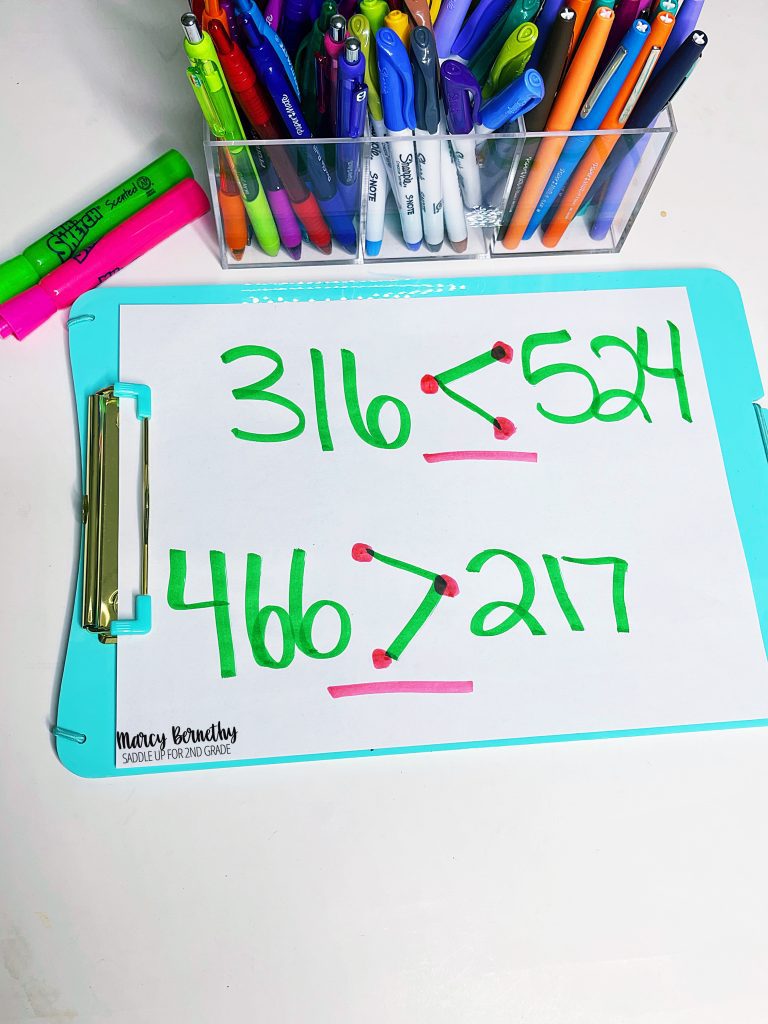
The Dot Method helps students prevent confusion on which direction the symbols should face to match the appropriate vocabulary term.
When practicing this skill, ask your students which place value within the numbers they are going to look at first to determine which number is larger. We want students to be able to explain their thinking using place value to express which number is greater.
For example, if comparing 316 and 524, students will look at the hundreds place and express that the 3 stands for 300 in 316 and the 5 stands for 500 in 524, which means 524 is larger.
When introducing the Dot Method, start by giving students a visual of this strategy with a comparing numbers anchor chart. This helps students connect the symbols and mathematical vocabulary terms with the visual aid of the Dot Method.
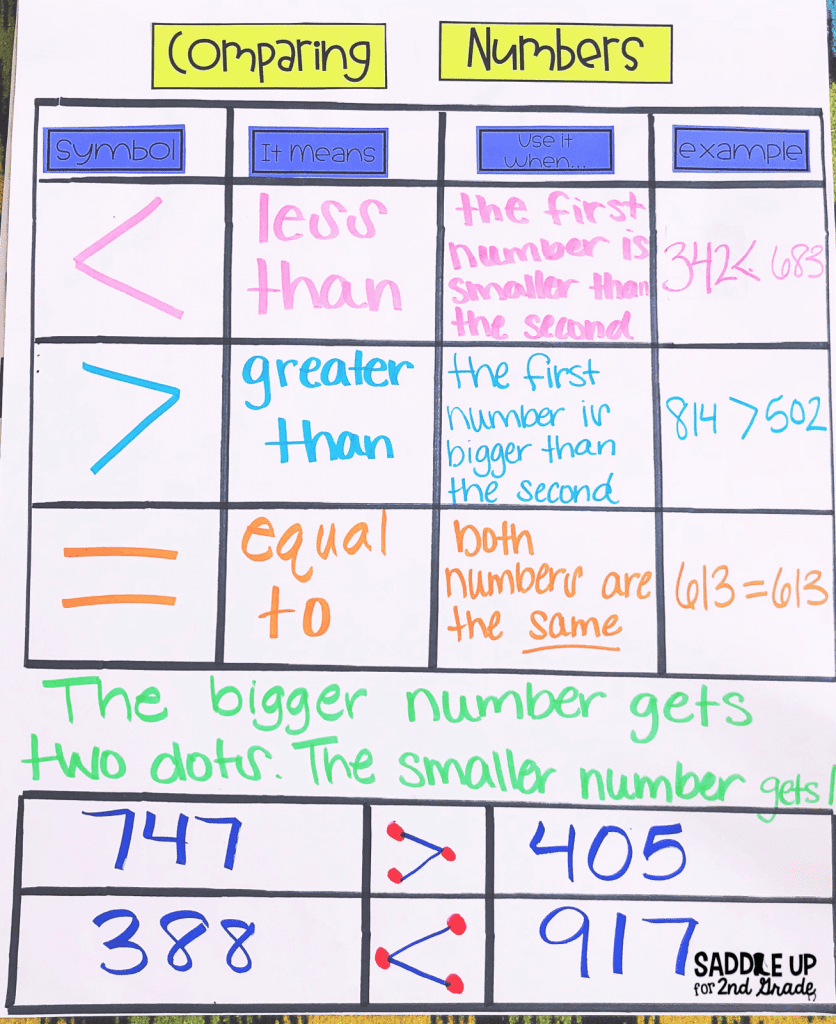
After introducing the Dot Method with a comparing numbers anchor chart, have students apply their learning by completing a mini-version of the anchor chart in their interactive notebook.
This comparing numbers interactive notebook anchor chart allows students to record the various symbols, mathematical vocabulary terms, and examples, but also gives them a space to practice using the Dot Method.
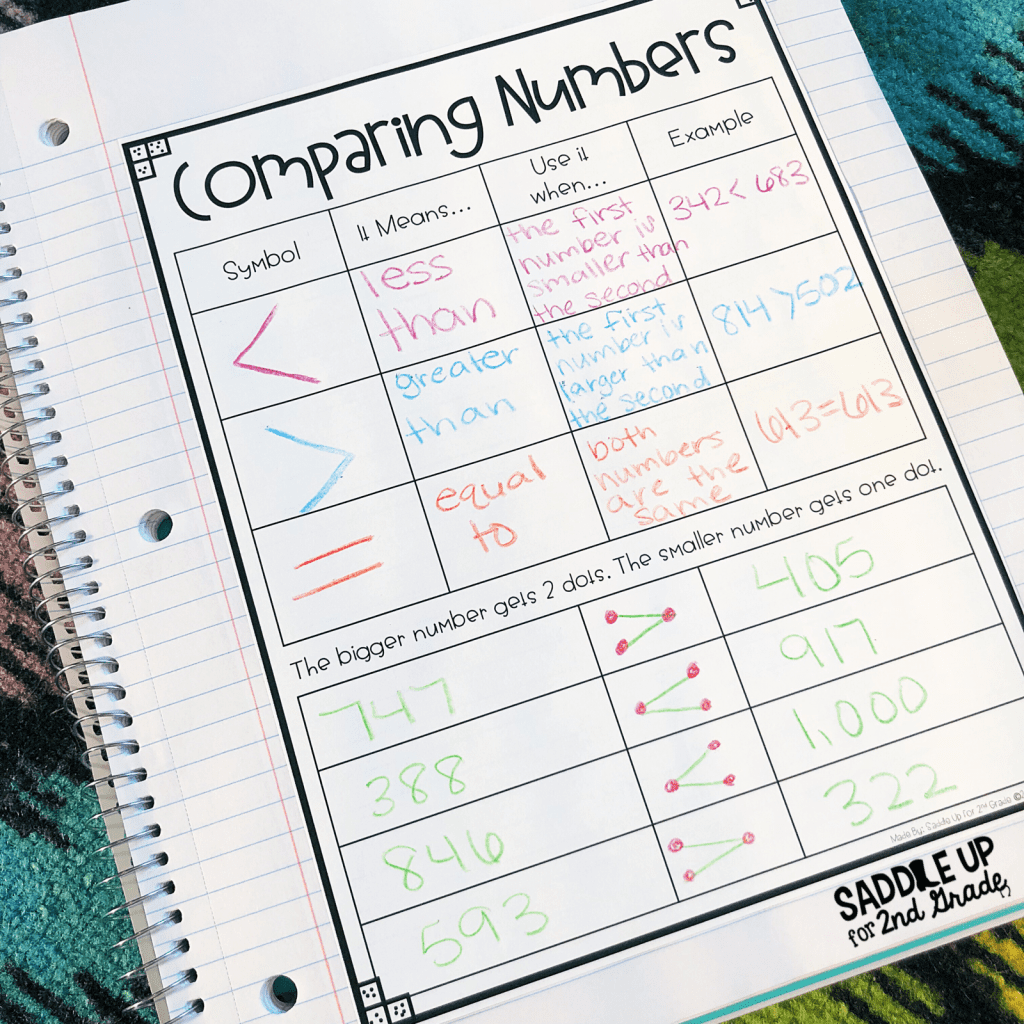
There are so many many fun ways to practice comparing numbers. You can click here to see some of my favorite comparing numbers activities. I share a comparing numbers anchor chart, interactive notebooks, ideas for math centers, and more.
If you’re looking for more resources, games, and hands-on activities for introducing this concept, check out my 1st, 2nd, and 3rd grade guided math units for understanding numbers and place value. Each of these units includes activities using the Dot Method for comparing numbers.
To see examples of how to use the Dot Method step-by-step, check out my How to Teach Comparing Numbers Using the Dot Method YouTube video below!
Save this post for later by pinning the image below!
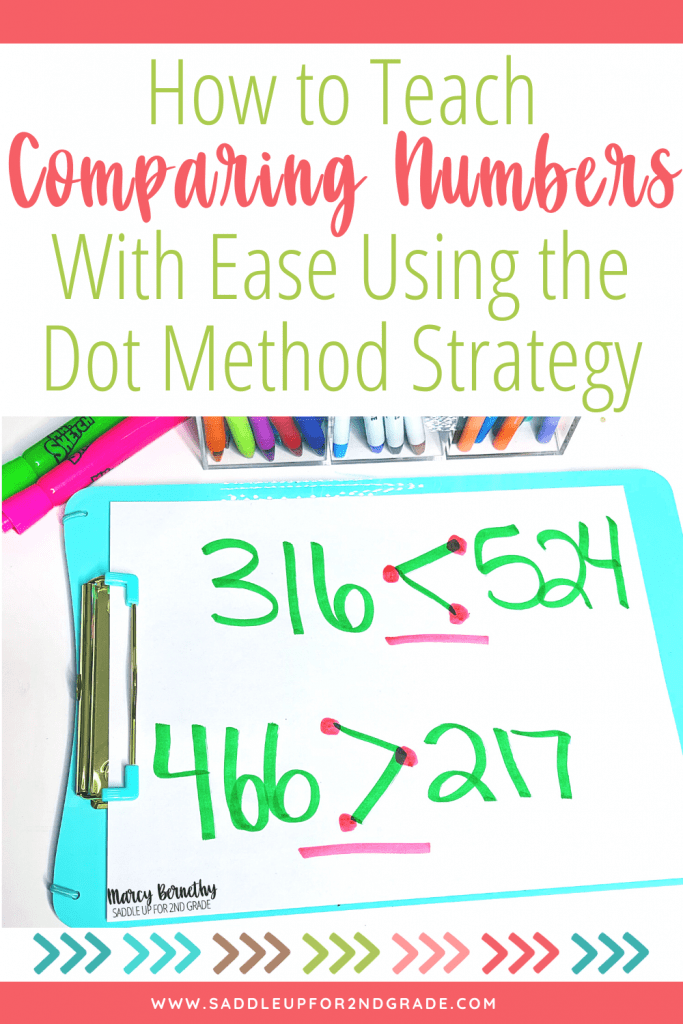
Math should be fun, not stressful. Ditch the timed math fact tests and replace them with math games that will help your students learn and retain information more effectively.
© Saddle Up for 2nd Grade • Website by KristenDoyle.co
